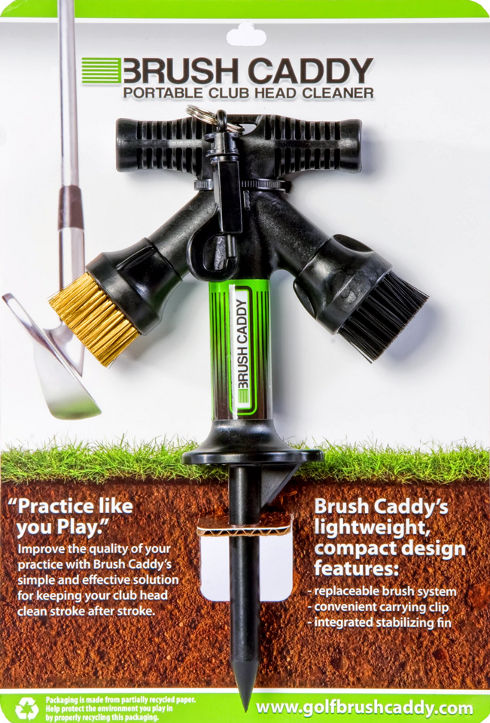 We all know that taking a divot is a good thing if it’s made in front of the ball, but even if it’s behind the ball, there is one result that is the same – dirt and sand caked on the face and in the grooves of your club. So unless you want the face of your club to look like a 5 year old kid went wild with 24-grit sandpaper after a single practice range session, after nearly every shot you’re walking back to your bag, wiping down the face with a towel, and possibly cleaning the grooves out. While you’re doing repeating this process, it doesn’t seem as if that much time is wasted, but think of how much more efficient your practice could be if you never had to go back to your bag to clean your clubs.
We all know that taking a divot is a good thing if it’s made in front of the ball, but even if it’s behind the ball, there is one result that is the same – dirt and sand caked on the face and in the grooves of your club. So unless you want the face of your club to look like a 5 year old kid went wild with 24-grit sandpaper after a single practice range session, after nearly every shot you’re walking back to your bag, wiping down the face with a towel, and possibly cleaning the grooves out. While you’re doing repeating this process, it doesn’t seem as if that much time is wasted, but think of how much more efficient your practice could be if you never had to go back to your bag to clean your clubs.
That’s where the Brush Caddy (the product for which the company is also named) come into play. The Brush Caddy sticks in the ground right beside your pile of balls, allowing you to quickly clean your clubs. While that’s a great theory, does it pan out in practice? Read on for my take.
Keeping the face of your clubs is important for a number of reasons. As I said above, hitting balls while dirt and sand remain on the face can lead to loads of scratches and scuffs, but that’s far from being the only negative effect. Ever heard the phrase “practice how you play”? Would you hit a ball off the fairway without first making sure the grooves are clean? Of course you wouldn’t because you’d be robbing yourself of achieving optimal spin and therefore run the risk of having your ball run off the back of the green as opposed to sticking it right where you intended. So if that’s common practice when you’re on the course, why wouldn’t you do the same when you’re at the range working on your game?
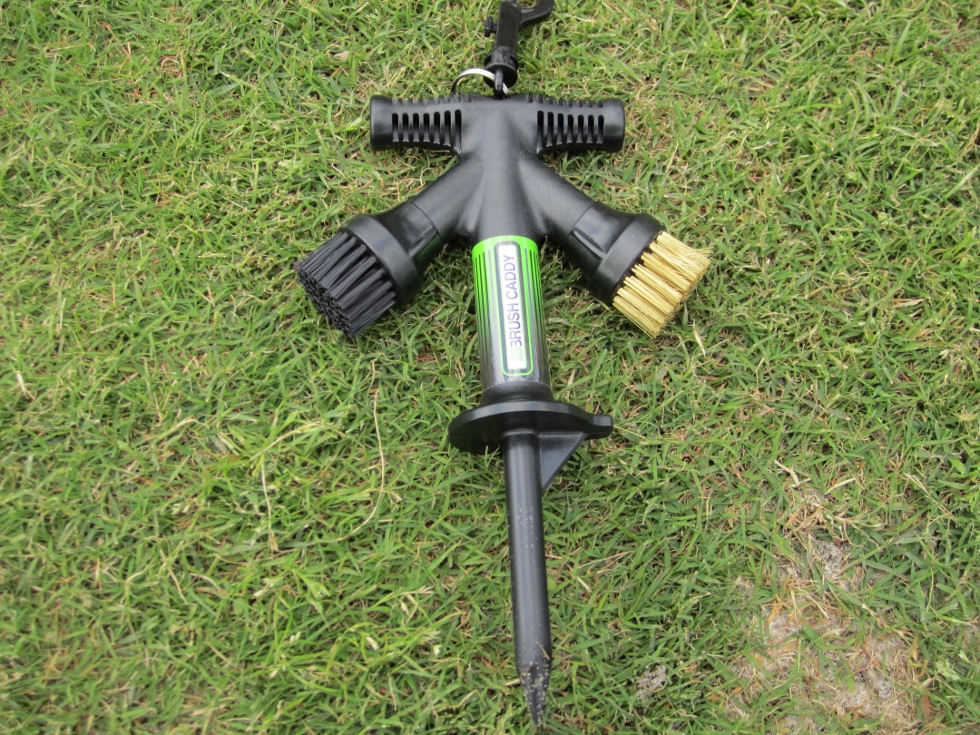
That’s where the Brush Caddy comes in. It keeps you in the moment, keeping the same swing thoughts in the front of your mind instead of having to walk back and forth to your bag to use your towel.
Not only does keeping the face clean help to prevent excess wear and scratches, it also prolongs the life of the grooves, keeps them from wearing excessively fast.
Technology and Design
The intention of the Brush Caddy is to improve time spent at the practice range by making it more efficient. This portable, free-standing dual-head golf brush promotes better practice through efficiency as it removes the need to walk back and forth to your bag in order to clean your club after every shot. Simply stake the Brush Caddy in the ground near your address position, and you’re ready to go.
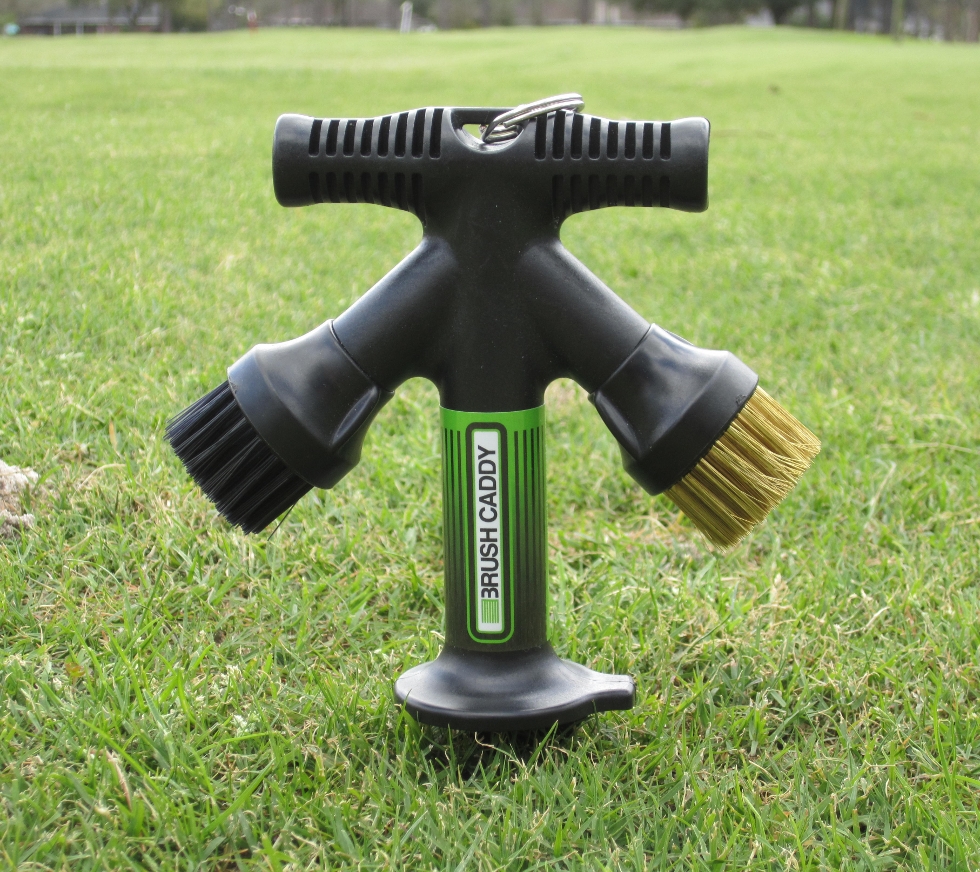
Of course, the main contributors to the functionality of the Brush Caddy are the multiple brushes reaching out which serve to clean the club face. Each brush serves a particular purpose: the brass brush is intended for cleaning the grooves, while the nylon brush removes remaining light debris on the face. These brushes are not permanent fixtures however, as the brush heads are actually removable and interchangeable so that when/if they become frayed and unusable, you don’t have to buy and entirely new unit; instead you can purchase replacement brush heads and the Brush Caddy is as good as new.
The guys at Brush Caddy obviously put some thought into the usage and design of their product, as simply staking something like it in the ground would likely end up twisting and turning in the ground. That’s where the stabilizing fin comes into play. This small triangular piece under the base keeps the Brush Caddy from rotating in the ground.
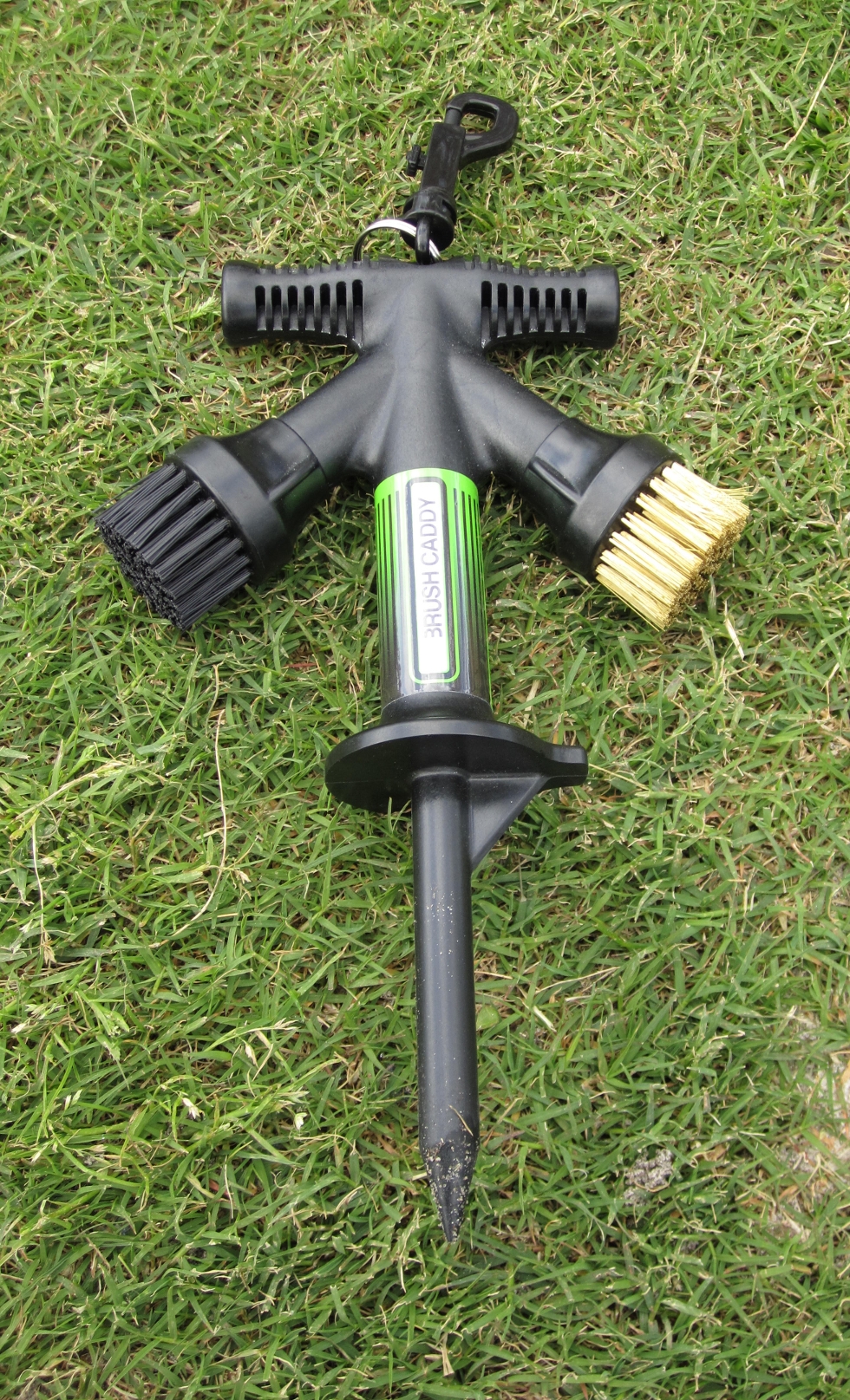
Transportation is easy enough as the Brush Caddy comes equipped with a bag clip for easy carrying. The compact, lightweight construction (made from partially recycled, glass filled nylon) ensures that the unit won’t add a significant amount of bulk or weight to your bag.
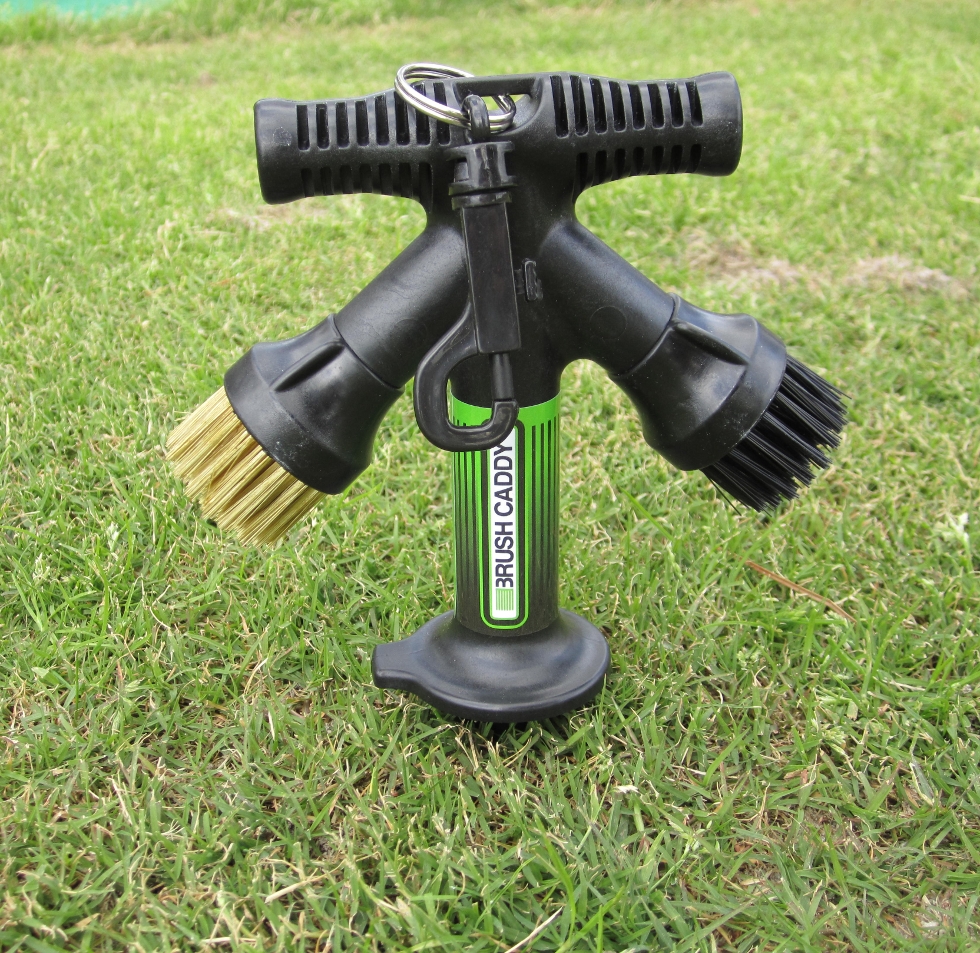
Performance
The Brush Caddy worked surprisingly well, and I was extremely pleased with how well it performed in multiple areas. I took it out to the range for a couple of test drives, and first and foremost, staking it into the ground was easy enough, as was pulling it up. There was no need to step down on it or apply an excessive force to put it in the ground or remove it. I lined it up even with my address position, and quickly found an unintended use for it. Normally I put a tee in the ground even with the ball in order to ensure the divots I’m taking are after the ball. The tees are no longer needed, as the Brush Caddy works as a great alternative, but again, that’s not exactly the purpose here.
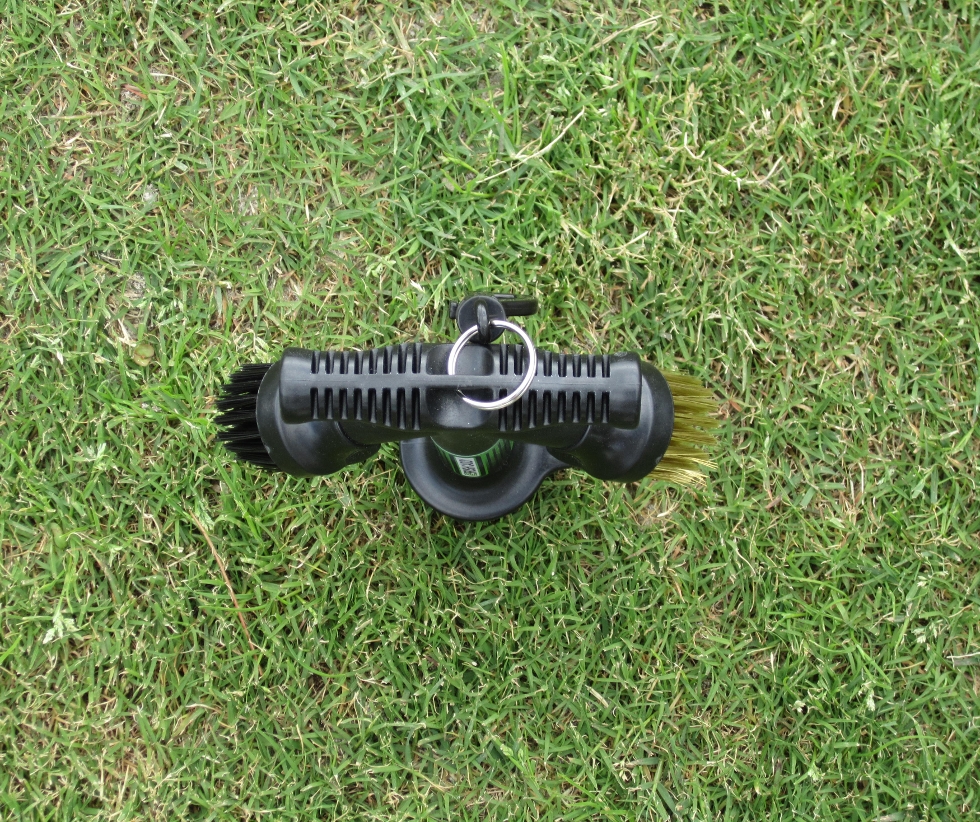
Both brushes worked perfectly, but there really weren’t many times I had to use the brass brush as the nylon brush got everything almost every time. My first thought was that I would still need my towel to get the a little remaining dirt/sand/grass, but the Brush Caddy proved me wrong over and over again. After every use, the club face was as clean as it was before taking the previous swing.
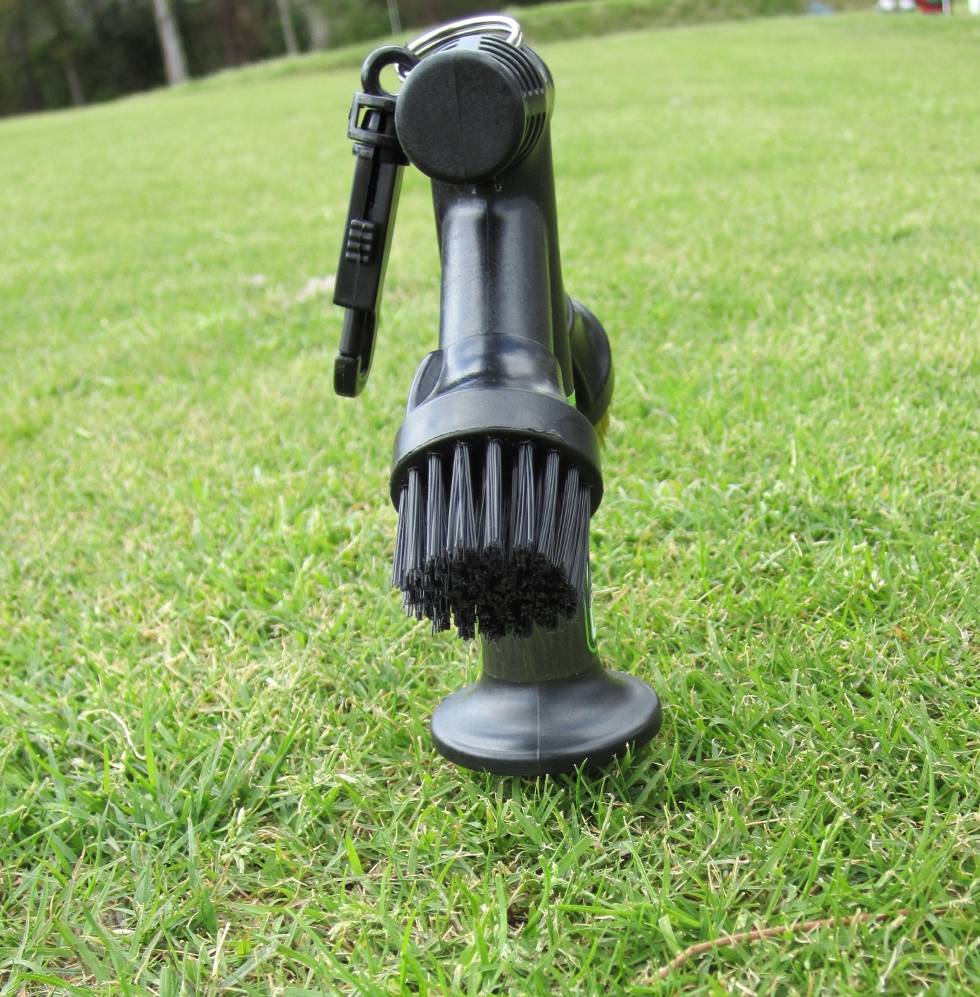
After 5-10 uses, the unit would turn a little and need straightening, but I attribute that to a number of things at the range, not necessarily to the Brush Caddy itself, though maybe a larger fin on the base might stop that completely. Still, it wasn’t an issue that really bothered me. I had also expected that having to apply a little upward pressure on the heads (with the clubhead, when brushing them off) would eventually cause the unit to lift out of the ground a bit, but that was never the case. It stayed situated deep in the ground until I was ready to go.
Even on some shots I hit a little fat and was left with dirt a little harder packed on the face, the Brush Caddy handled the situation with ease. If it was evident the nylon brush wasn’t stiff or abrasive enough, the brass brush was more than enough to do the trick. I thought there were times a little water may be needed, but again and again I was proven wrong.
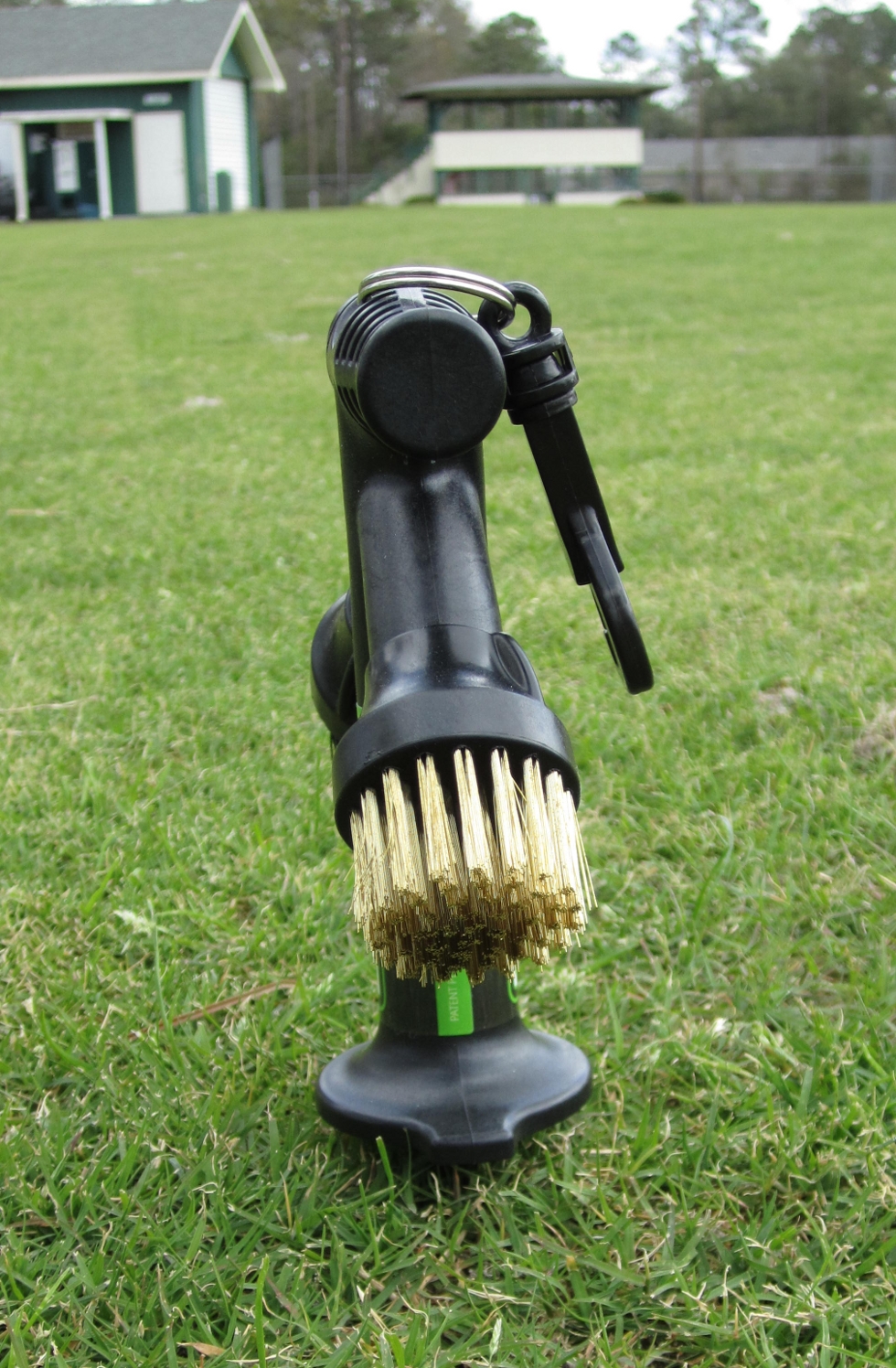
The brush heads remove by unscrewing them with a firm turn, so when it comes time to change them out (though I can’t see that being any time soon), making the swap simple and easy. As a whole, the Brush Caddy seems to be durable enough. I’ve only had it a couple of months or so, but there’s nothing that leads me to believe it won’t last for a very long time. Also as advertised, it is very light, and added no noticeable weight to my bag. I really couldn’t have asked for more in that department! Though I can see the bag clip coming in handy, I already have my Steelers towel and my GPS hanging off, so I chose to simply put it in the large internal pocket in my bag. As long as I make sure to wipe off the stake prior to putting it in, this shouldn’t be an issue.
Conclusion
I’d highly recommend the Brush Caddy to anyone that spends any significant time at the range. It will save you not only time, but wear and tear on your clubs as well. The Brush Caddy itself is priced at $24.99, and in my opinion, that’s a very small price to pay for a product that can go a long way in prolonging the pristine, clean appearance of your clubs as well as the performance of the grooves themselves. The decision to make the brushes themselves modular was pretty smart as well, so that when they’re worn out, you’re not stuck buying another Brush Caddy. At $6.99 per replacement brush head, I think that beats paying another $25 for an entirely new unit. I’ve got nothing but praise for this product and I’m looking forward to using it for quite a while, as it really does help to keep you concentrated on practice instead of pacing back and forth to your towel after every shot.
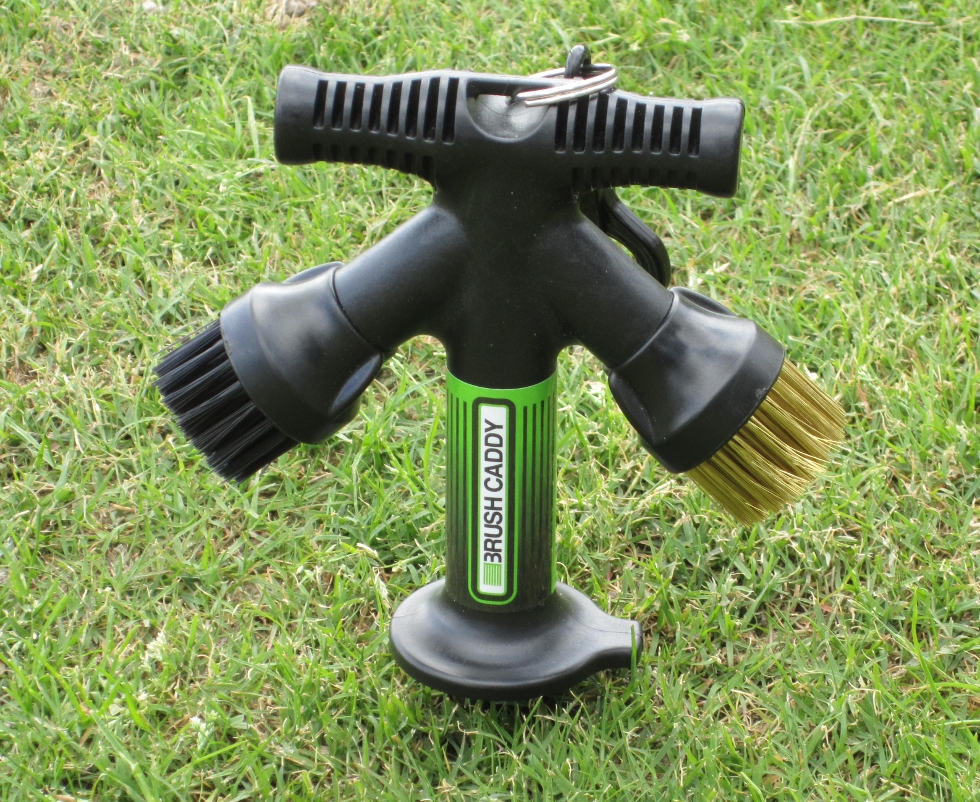
not to diss the brush caddy, but my $5 brush with a handle does the exact same thing.
Hi haapamaki, I’m guessing your brush is the type that hangs from your bag…? If that’s the case, both brushes have completely different uses. Although they both will clean a club head, they don’t do the exact same thing. Brush Caddy isn’t meant to be used while it’s hanging on your bag, it’s meant to be inserted into the ground in front of you while you’re at the range. Much different. Let me know if you have any questions, thanks for posting.
Where can this be purchased?